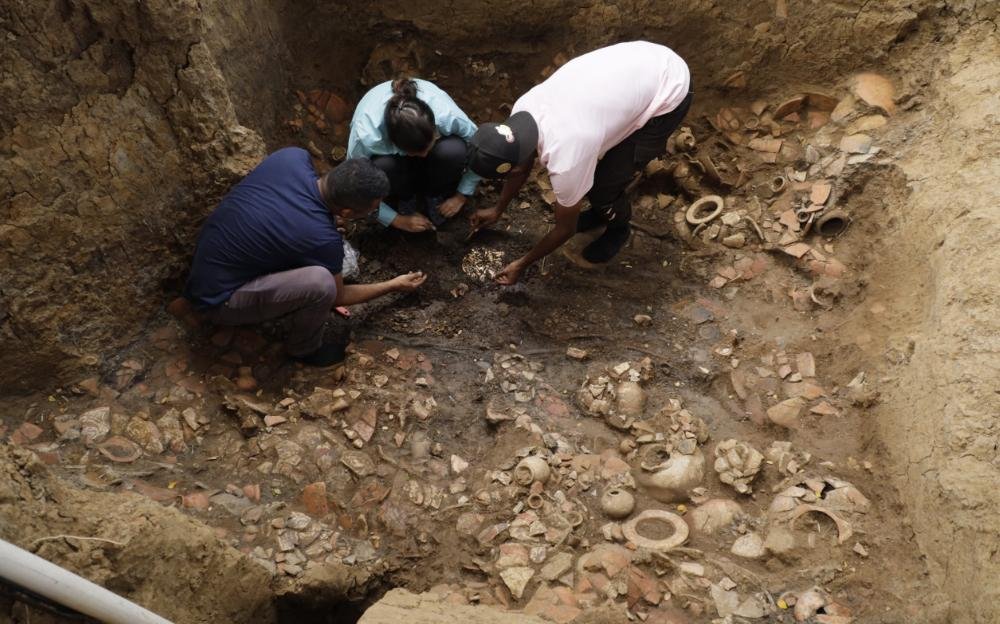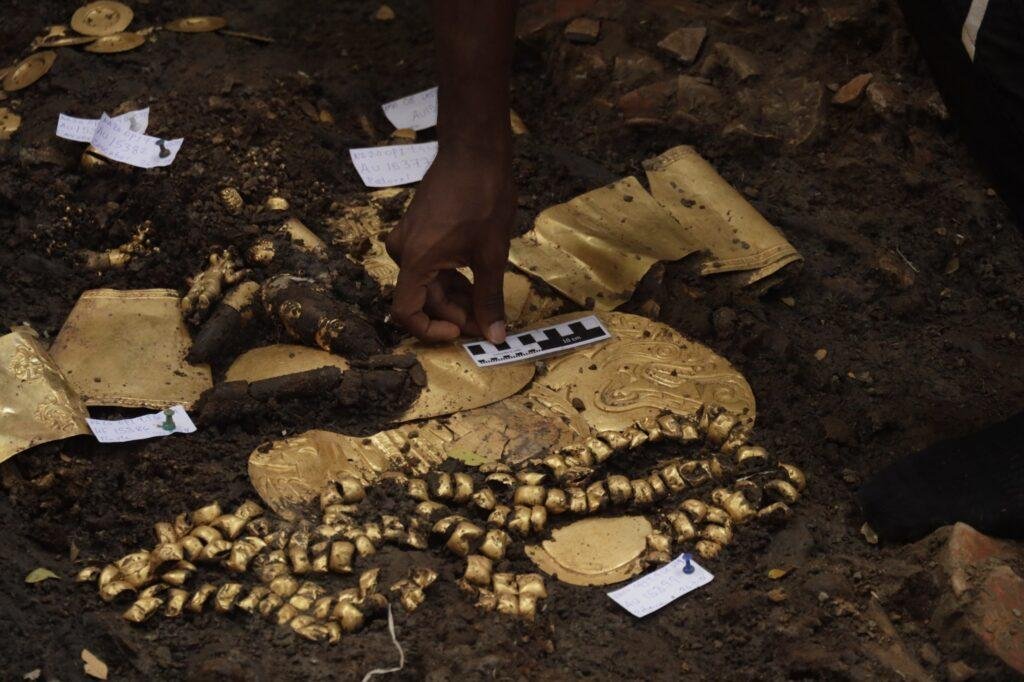Archaeologists have unearthed a high-status tomb at the El Caño Archaeological Park in Panama. The tomb, believed to belong to a Coclé lord dating back to 750 CE, was found to contain a wealth of funerary offerings, including ceramic and gold artifacts.
 Credit: Ministry of Culture of Panama
Credit: Ministry of Culture of Panama
The El Caño Archaeological Park, situated in the Coclé Province, is renowned for its necropolis of tombs and stone monoliths dating from 700 to 1000 CE. The site’s significance was first recognized in 1925 by American explorer Hyatt Verrill, who stumbled upon ancient monoliths along the banks of the Rio Grande River.
The recent excavation project was led by the El Caño Foundation and supported by the Ministry of Culture of Panama. Dr. Julia Mayo, director of the El Caño Foundation, explained that Tomb, designated as Tomb No. 9, contains the remains of a Coclé lord, along with other individuals who were buried to accompany him in the afterlife.
The tomb’s contents are a testament to the wealth and status of its occupants, with offerings including golden plates, belts of gold beads, bracelets, earrings, necklaces, and ceremonial objects made from ceramic and bone. Dr. Mayo noted that the excavation process is ongoing, making it difficult to determine the exact number of individuals buried within the tomb.
 Credit: Ministry of Culture of Panama
Credit: Ministry of Culture of Panama
The discovery of Tomb No. 9 is significant not only for its archaeological value but also for what it reveals about ancient burial practices in Coclé society. Dr. Mayo explained that the Coclé lord was buried in a face-down position, a customary practice in this culture, often atop the remains of a woman.
Linette Montenegro, national director of Heritage at the Ministry of Culture, highlighted that these discoveries not only have economic value but also offer priceless insights into Panama’s pre-Hispanic past.
The excavation of Tomb No. 9 is part of a long-term archaeological project initiated in 2022 and financed through a cultural cooperation agreement between the Ministry of Culture and the El Caño Foundation.
The El Caño site, built around 700 CE and abandoned around 1000 CE, includes not only tombs and monoliths but also a cemetery and ceremonial areas with wooden structures.
Dr. Mayo highlighted the significance of this discovery, particularly the presence of multiple and simultaneous burials within the tomb. These burials, involving a variable number of individuals buried alongside high-status individuals, offer unique insights into Coclé burial customs and societal structure.





